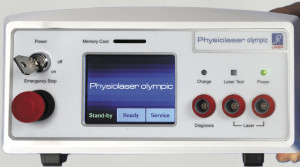Why Quit?
Smoking is recognized world-wide as one of the habits most hazardous to health. According to the World Health Organisation, tobacco kills almost six million people each year, the most common deaths related to smoking including lung cancer, coronary heart disease and cardiovascular/respiratory diseases. The statistical research shows that “More than five million of those deaths are the result of direct tobacco use while more than 600 000 are the result of non-smokers being exposed to second-hand smoke. Moreover, approximately one person dies every six seconds due to tobacco, accounting for one in 10 adult deaths”. (WHO 2013)

Although most of us realize how damaging smoking can be to our health, it is the withdrawal symptoms that make it so difficult for people to either never try, or fail to quit fully. With the help of low-level laser treatment, withdrawal symptoms such as nausea, headache, insomnia, fatigue, irritability, anxiety, inability to concentrate, drowsiness and increase in appetite can be reduced and managed.
Studies have found stimulation on acupuncture points with a low-level laser to be beneficial in all types of treatment and management. At our clinic, we use the NATA protocol which has been scientifically proven to be most beneficial in supporting patients with addiction.
Biological effects of nicotine
• Nicotine reaches the brain in 7 seconds blocking the parsympathetic system
• Increases the blood pressure
• Increases the pulse rate
• Vasoconstricts
• Contributes to plaque (vessel damage)
• Damages the lining of the lungs (tar)
• Increases free radicals
RESEARCH
- Painless Laser Acupuncture for Smoking Cessation 2018
The PLA technique for smoking cessation, combined with the principles of TCM, not only helps smokers stop smoking but also restores their homeostasis and good health.
- Low level laser for the stimulation of acupoints for smoking cessation: a double blind, placebo controlled randomised trial and semi structured interviews
This double blind randomized trial found laser acupuncture to assisted smoking cessation by reducing the withdrawal symptoms.

